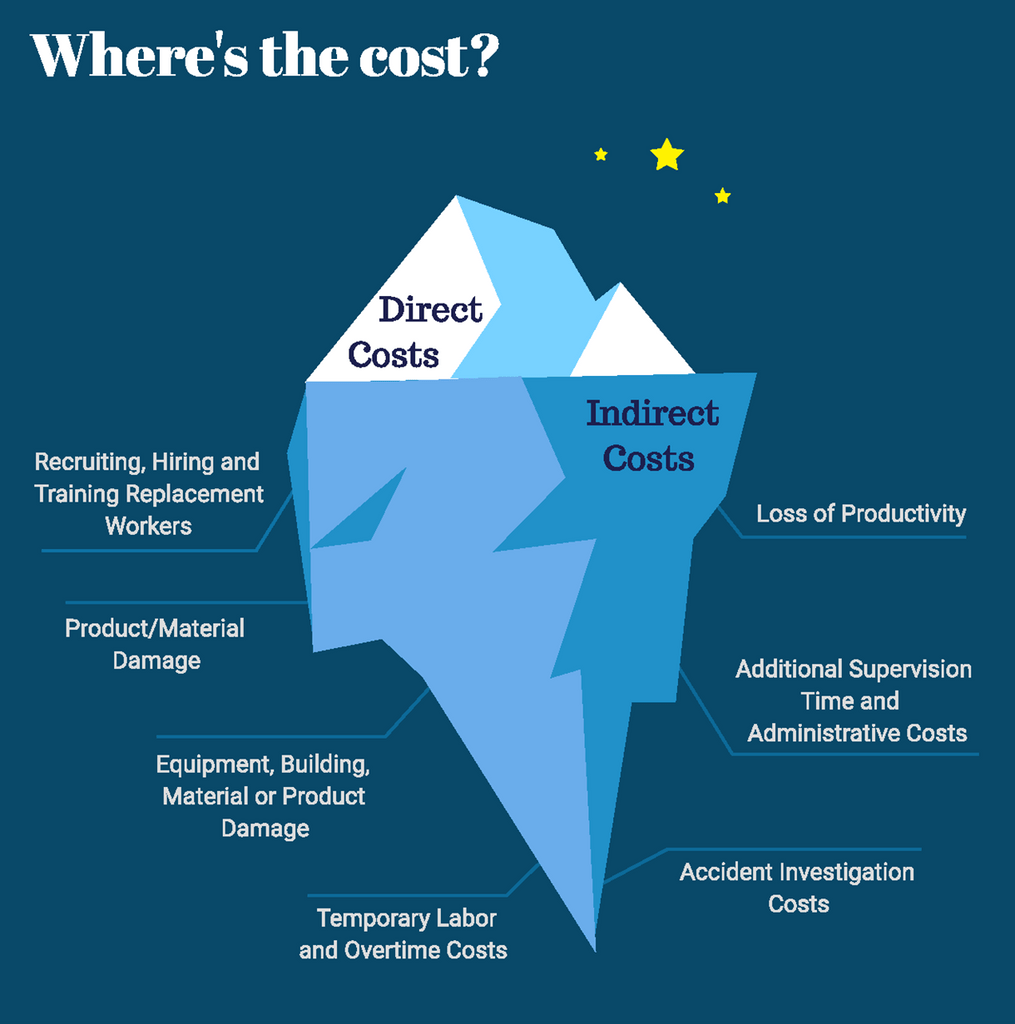Are you Safe from Sound?
It’s hard to see the true cost of an accident. You are vulnerable to workplace noise and Noise-Induced Hearing Loss, and it cost a lot.
Posted on: Jul 09, 2021
The Iceberg Effect
Imagine you are looking at an iceberg. How much of the entire iceberg do you think you see? It’s hard to see the full picture without seeing the whole iceberg. Similar to workplace accidents, it’s hard to see the true cost of an accident.
There are two types of costs to a workplace: Direct and Indirect. It’s easy to see the direct costs, hospital bills, and compensation. Indirect costs are the aftermath of direct costs. It’s harder to view how the loss of productivity, legal fees, increased insurance cost, etc. will affect its profits. These indirect costs are made from the employer’s pocket and range from $3 to $10 for $1 of direct cost. Managers tend to pay more money as a result of not buying protective safety equipment (Gardner, 2017). Investing in safety equipment and accident prevention is a smart choice.
Noise Induced Hearing Loss
(NIHL)
Noise-induced hearing loss is the exposure to excessively loud sounds that can critically damage your hearing and can’t be medically or surgically corrected (CDC, 2020).
If you are a worker in a noisy industry, there is about a 1 in 6 chance that you will show signs of NIHL. Suppose you work in the oil and gas industry that number changes to over 1 in 3. Look to your coworkers left and right. One of you will have NIHL. These workers in the oil and gas industry have reported wearing hearing protection and are still reporting to have signs of NIHL. In addition, Young workers aren’t treating this seriously as about 1 in 6 individuals under the age of 35 aren’t wearing any hearing protection (WorkSafe BC, 2015).
Are you vulnerable to workplace noise?
Imagine flipping a coin, in 2012 and 2013, there is nearly a 1 in 2 chance (42%) that Canadians work in a noisy environment or have done so in the past. It is estimated that almost 1 in 5 people (17%) have reported that they needed to raise their voice to be heard. This indicates that they are working in a hazardous noise environment of sound above 85 decibels (Ramage-Morin & Gosselin, 2018). 85 Decibels of continuous noise for 8 hours is equivalent to the recommended daily limit. Sounds equivalent to 85 decibels are heavy traffic, window air conditioner, noisy restaurant, and a power lawn mower (HealthLinkBC, n.d.). Ask yourself, are your work environment sounds higher than these examples?
The louder the sounds are, the less time you can listen to them without damage. Hearing protectors reduce the loudness as the sounds come to the ear. They make it possible to resist the sound’s damages for longer (WorkSafe BC, 2015).
- CDC. (2020, June 8). Preventing Noise-Induced Hearing Loss. Retrieved from Centers for Disease Control and Prevention:
https://www.cdc.gov/ncbddd/hearingloss/noise.html - Gardner, A. (2017, November 30). The True Cost of An accident. Retrieved from Noviqu:
https://www.noviqu.com/posts/cost-of-accident.html - HealthLinkBC. (n.d.). HealthLinkBC. Retrieved from Harmful Noise Levels:
https://www.healthlinkbc.ca/health-topics/tf4173 - Ramage-Morin, P., & Gosselin, M. (2018, August 15). Statistics Canada. Retrieved from Canadians vulnerable to workplace noise:
https://www150.statcan.gc.ca/n1/pub/82-003-x/2018008/article/00002-eng.htm - WorkSafe BC. (2015, November). Hearing test results in the oil and gas industry: Low participation rate and evidence of noise-induced hearing loss (NIHL). Retrieved from WorkSafe BC:
https://www.worksafebc.com/en/resources/health-safety/hazard-alerts/hearing-test-results-in-the-oil-and-gas-industry



